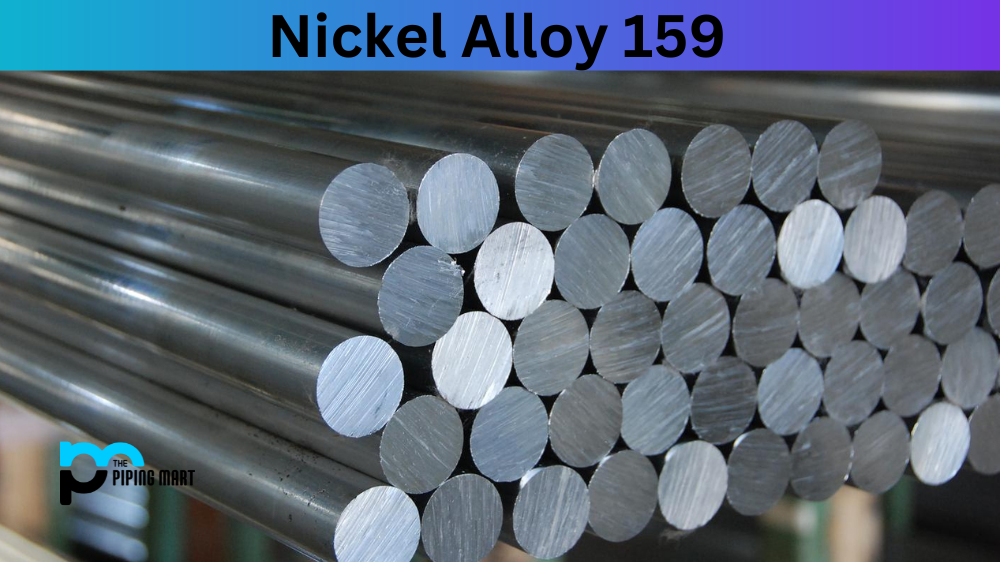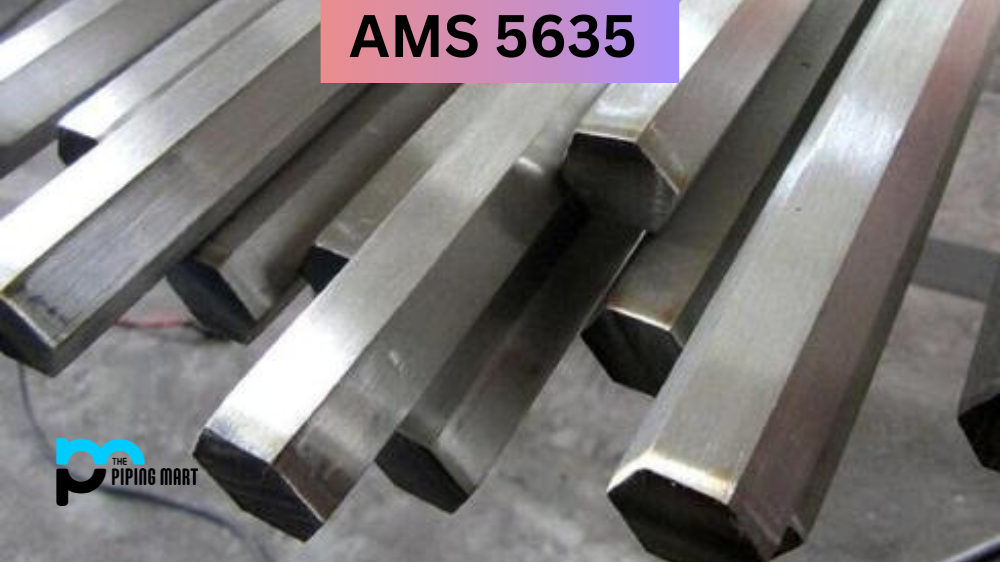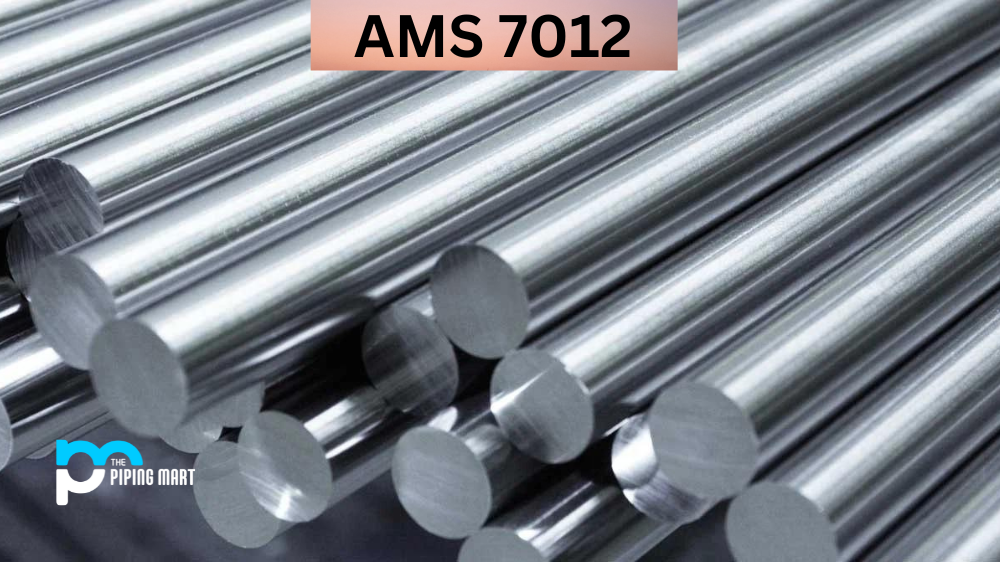In engineering, the discovery and development of various materials that can be utilized in different industries have revolutionized how things are done. Specifically, other alloys have paved the way for innovations that further enhance our way of life. One such alloy is Nickel Alloy 159. This blog will explore Nickel Alloy 159’s components, mechanical and physical properties, and various uses in different industries. Let’s dive in!
Nickel Alloy 159 Composition
Nickel Alloy 159 is a nickel alloy with small amounts of iron, aluminium, and titanium. It has a nickel content of 99.5%. The small amounts of iron, aluminium, and titanium present in the alloy helps enhance its strength, hardness, and machinability.
| Element | Content (%) |
|---|---|
| Cobalt, Co | 35.7 |
| Nickel, Ni | 25.5 |
| Chromium, Cr | 19 |
| Iron, Fe | 9 |
| Molybdenum, Mo | 7 |
| Titanium, Ti | 3 |
| Niobium, Nb | 0.6 |
| Aluminum, Al | 0.2 |
Nickel Alloy 159 Mechanical Properties
Nickel Alloy 159 is known for its exceptional strength and hardness, even at high temperatures. It has a tensile strength of 117 ksi (kilopound per square inch) and a yield strength of 60 ksi. It also has excellent fatigue and creep resistance and can withstand cyclic or dynamic loading.
| Properties | Metric | Imperial |
|---|---|---|
| Tensile strength (annealed 1052°C) | 848 MPa | 123000 psi |
| Yield strength (at strain 0.200%, annealed 1052°C) | 400 MPa | 58000 psi |
| Elastic modulus (at 232°C/450°F, annealed) | 208 GPa | 30200 ksi |
| Shear modulus (at 232°C/450°F, annealed) | 75.8 GPa | 11000 ksi |
| Elongation at break (cold worked 48%) | 12% | 12% |
| Reduction of area | 46% | 46% |
Nickel Alloy 159 Physical Properties
Due to its high nickel content, Nickel Alloy 159 has excellent thermal and electrical conductivity. It also has a low coefficient of expansion, which enables it to retain its shape even when subjected to high temperatures. Its density is 8.88 g/cm³, making it a relatively lightweight alloy.
| Properties | Metric | Imperial |
|---|---|---|
| Density | 8.33 g/cm³ | 0.301 lb/in³ |
| Melting point | 1427°C | 2600°F |
Nickel Alloy 159 Equivalent
- AMS 5841
- AMS 5842
- AMS 5843
Nickel Alloy 159 Uses
Nickel Alloy 159 has a wide range of uses in various industries. It is often used in aerospace for components that require high strength, hardness, and fatigue resistance, such as gas turbines. It is also used in the nuclear industry due to its excellent resistance to heat and corrosion. In addition, the alloy is commonly used in the chemical and petrochemical industries for its resistance to corrosion and high-temperature environments.
Nickel Alloy 159 Corrosion Resistance
Nickel Alloy 159 is highly corrosion resistant, making it an ideal material for use in harsh environments. It can withstand both oxidizing and reducing environments and acidic and alkaline solutions. Its resistance to corrosion and high-temperature environments makes it an ideal choice for use in the chemical and petrochemical industries.
Nickel Alloy 159 Heat Treatment
Nickel Alloy 159 can be heat-treated to enhance its mechanical properties. The heat treatment process involves annealing the alloy at a temperature of 1900°F (1038°C) for four hours, followed by cooling at a rate of 200°F (111°C) per hour until the temperature reaches 1200°F (648°C). This process helps improve the alloy’s strength and hardness.
Nickel Alloy 159 Machining
Nickel Alloy 159 has good machinability but can be challenging due to its high strength and hardness. To machine this alloy properly, special tools and techniques are required. The use of coolant is also recommended to prevent overheating, which can cause the alloy to deform.
Nickel Alloy 159 Welding
Nickel Alloy 159 can be welded using various techniques, such as gas tungsten arc welding (GTAW), gas metal arc welding (GMAW), and shielded metal arc welding (SMAW). However, due to its high nickel content, it is essential to take proper precautions to prevent cracking. Preheating the alloy and maintaining interpass temperatures during welding can help prevent cracking.
Conclusion
Nickel Alloy 159 is a versatile alloy that has a wide range of uses in different industries. Its exceptional strength, hardness, and resistance to high-temperature environments and corrosion make it an ideal material for various applications. This alloy can be customized with proper heat treatment, machining, and welding techniques for different engineering needs. Discovering the wonders of Nickel Alloy 159 is just the beginning of endless possibilities.

Abhishek is a seasoned blogger and industry expert, sharing his insights and knowledge on various topics. With his research, Abhishek offers valuable insights and tips for professionals and enthusiasts. Follow him for expert advice on the latest trends and developments in the metal industry.




